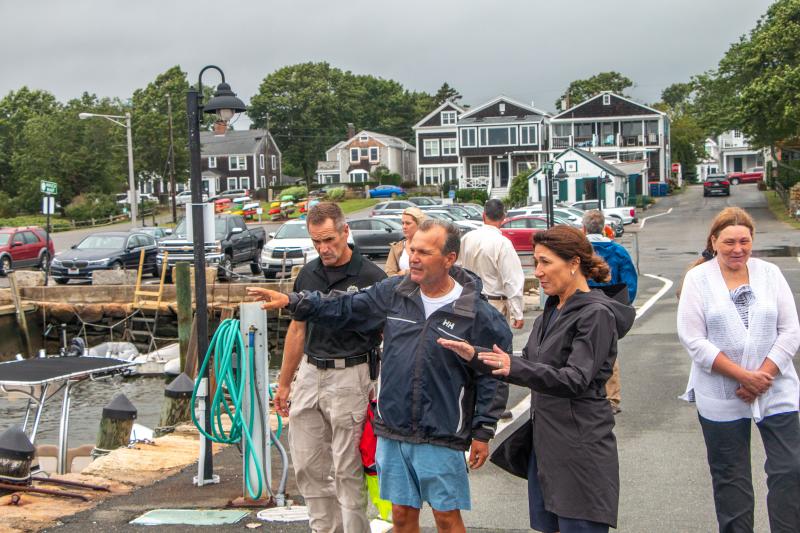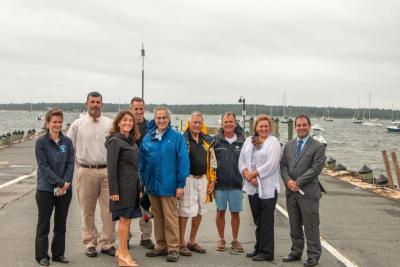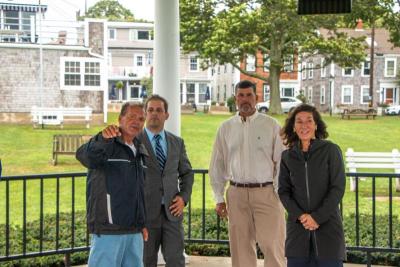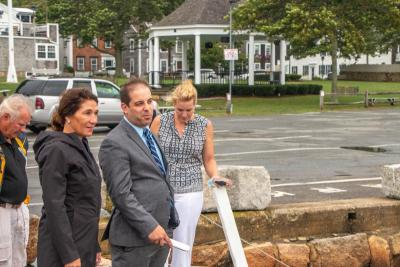State money, Lieutenant Governor visit keeps Mattapoisett wharf project afloat
MATTAPOISETT — They say a good captain always goes down with the ship, but who goes down with a sinking wharf?
That’s a question most in Mattapoisett would prefer not to have to answer, and with local and state officials at the helm, they may not have to.
Lieutenant Governor Karyn Polito visited Mattapoisett on Thursday, Aug. 19 to take a tour of Town Wharf and get an in-person look at the site before repairs to long-standing problems begin.
The issues with the wharf have been steadily developing for decades as the aging timbers which support it slowly decayed, leaving voids in their place that caused sinkholes to form.
“We like to know we’re putting our dollars to good use,” Polito said, adding “we’re happy to support you knowing you’re going to get something done.”
The town was recently awarded a grant from the Seaport Economic Council for $216,000 which, combined with the town’s 25% match of $54,000, will pay for the design and engineering required to begin the repairs to one of the town’s centerpieces.
“It’s one of the key focal points — the wharf — it’s one of the key assets to the town,” said Mattapoisett Select Board Member Jordan Collyer at a July 20 meeting. “It’s not just the benefit of the boaters and the people who fish out there… To think about not having access to that asset is, I think, the most concerning thing.”
The town is currently getting ready to open bidding for the design and engineering phase which is expected to begin in about a month and to take 8-14 months to complete, according to Town Administrator Mike Lorenco.
Spot fixes have been made over the years as asphalt and cement crumbled away, but the wharf has reached a point where it needs a more complete rebuild. Without it, the risk of collapse will grow with each passing year.
“The big issue here is we need to keep it from falling into the ocean,” said Collyer at the July 20 meeting.
According to Marine Advisory Board Chairman Carlos DeSousa, the last time the wharf was thoroughly inspected by field engineers was in the early-to-mid 2000s and the work only reached the schematic design phase, meaning no repairs were made at the time.
“So, the only thing we know is that there are a lot of voids in there, that it's undermined, and that the bulkheads need to be reconstructed,” he said at the July 20 meeting, adding “this is going to be a lot of money to repair.”
Collyer calmed some of the concerns about cost to the taxpayer by pointing out that the funding for the project would not come out of an enterprise fund but through the Community Preservation Act and other outside sources.
“That’s [going to need] a whole bunch of funding sources to come together and make that happen,” he said.


















